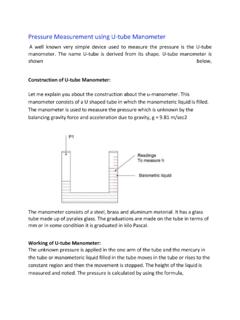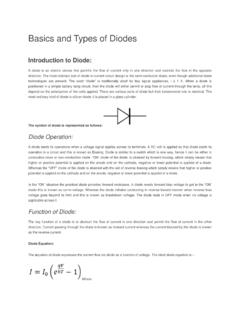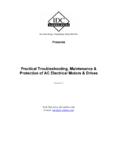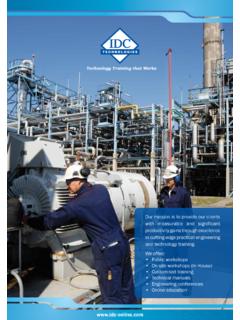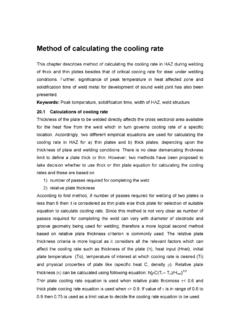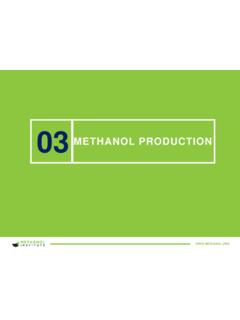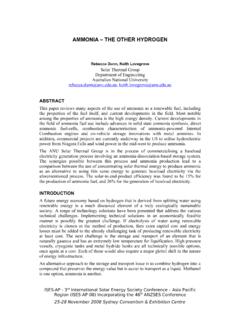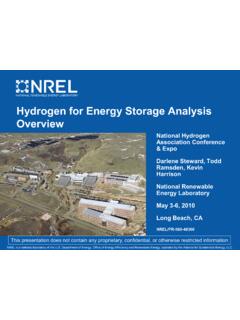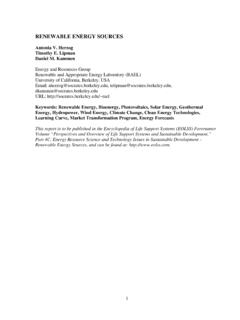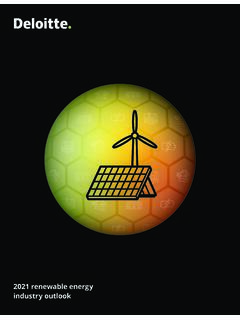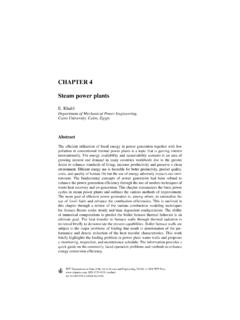Transcription of The 21st Century Electric Car Tesla Motors - idc-online.com
1 Copyright 2006 Tesla Motors Updated: September 24, 2007 Page 1 of 10 The 21st Century Electric Car Tesla Motors October 9, 2006 By Martin Eberhard and Marc Tarpenning The Electric car, once the zero-emissions darling of environmentalists, is sometimes maligned as an emissions-elsewhere vehicle, since the electricity to charge its batteries must be generated in electrical generation plants that produce emissions. This is a reasonable point, but we must then ask how much pollution an Electric car produces per mile accounting for all emissions, starting from the gas or oil well where the source fuel is extracted, all the way to the final consumption of electricity by the car s motor .
2 When we work through the numbers, we find that the Electric car is significantly more efficient and pollutes less than all alternatives. In this paper, we will investigate the Tesla Roadster , which uses commodity lithium-ion batteries instead of lead-acid batteries or nickel-metal-hydride batteries as most Electric cars have used. Not only does this lithium-ion based car have extremely high well-to-wheel energy efficiency and extremely low well-to-wheel emissions, it also has astonishing performance and superior convenience. Lithium ion batteries are a lot more difficult to use than previous technologies; this is the reason that they have not so far been used in Electric cars.
3 Tesla Motors is spending a lot of effort making a safe, light, and durable lithium ion battery system. Over time, Tesla will probably put tens of millions into pack and cell features and optimization. However as this paper will show, the energy and power density of lithium ion batteries make this effort very worthwhile. Energy Efficiency To compute the well-to-wheel energy efficiency of any car, we start with the energy content of the source fuel ( coal, crude oil or natural gas) as it comes from the ground. We then track the energy content of this fuel as it is converted to its final fuel product ( gasoline or electricity), subtracting the energy needed to transport the fuel to the car.
4 Finally, we use the fuel efficiency of the car itself ( its advertised mpg) to complete the equation. All fuels can be described in terms of the energy per unit of mass. In this paper, we will express the energy content of fuels in terms of mega-joules per kilogram (MJ/kg). Well-to-wheel efficiency is then expressed in terms of kilometers driven per mega-joule (km/MJ) of source fuel consumed a higher number is better. Gasoline Cars In this section, we will calculate the well-to-wheel energy efficiency of a normal gasoline-powered car. First, let s take gasoline s energy content, which is MJ/kg,1 or Second, we know that production of the gas and its transportation to the gas station is on average efficient,3 meaning that of the energy content of the crude oil is lost to production and transportation.
5 Third, MJ/l / = 42 MJ/l; 42 mega-joules of crude oil are needed to produce one liter of gasoline at the gas pump. An interview with Prof. Donald Sadoway From MIT s Technology Review, Tuesday, November 22, 2005 The Lithium Economy: Why hydrogen might not power future vehicles and lithium-based batteries might By Kevin Bullis TR: How good can batteries get? DS: I think we could easily double [the energy capacity of] what we have right now. We have cells in the lab that, if you run the numbers for a thin-film cell of reasonable size, you end up with two to three times current lithium ion [batteries]. But there's more. The fantasy of all fantasies is chromium.
6 If we could stabilize chromium [as a material for battery cathodes] and I you a battery with 600-700 watts per kilogram [of energy capacity] with reasonable drain rate, that says good-bye hydrogen economy. TR: You've driven an Electric car before. What was that like? DS: I opened the sun roof, rolled down the windows, and I pulled out. It was like a magic carpet. You hear people laughing, talking, and you're interacting with the city. I returned the vehicle to the fellow at Boston Edison, and I came back here and said, "I've got to work harder. I've got to make this thing happen." The only reason that car isn't everywhere: it couldn't go more than 70 miles on a charge.
7 But you make it 270, game over. Anybody who drives it will never go back to internal combustion. Page 2 of 10 Copyright 2006 Tesla Motors Updated: September 24, 2007 The most efficient ordinary gasoline car made was the 1993 Honda Civic VX, which was EPA-rated at 51 mpg for combined city and highway Converting to metric, this car was rated at kilometers per liter of gasoline. Thus, its efficiency is km/l / 42 MJ/l = km/MJ. Keep in mind that the Honda Civic VX got about twice the gas mileage of typical cars a car like a Toyota Camry is rated around km/MJ.
8 5 Hybrid Cars All hybrid cars available today have no provision to charge their batteries except by using energy that is ultimately generated by their gasoline engines. This means that they may be considered, from a pollution and energy efficiency perspective, to be nothing more than somewhat more efficient gasoline cars. If the EPA-certified gas mileage for such a car is 51 mpg, this is exactly the same as an ordinary gasoline car that gets 51 mpg. (If a hybrid car could recharge its batteries by plugging in when at home, and if its batteries held enough charge for a meaningful drive, this would not be true.) The most efficient hybrid car is the 2005 Honda Insight, which gets 63 mpg for combined city and highway Using similar math as we used for the Civic VX above, the Insight s well-to-wheel energy efficiency is km/MJ.
9 The famous Toyota Prius is EPA-rated to get 55 mpg in combined city-highway driving, for an energy efficiency of Electric Cars Even with tires and gearing optimized for performance (rather that absolute efficiency), the Tesla Roadster only consumes about 110 watt-hours ( mega-joules) of electricity from the battery to drive a kilometer, or km/MJ. 8 The energy cycle (charging and then discharging) of the lithium-ion batteries in the Tesla Roadster is about 86% efficient. This means that for every 100 mega-joules of electricity used to charge such a battery, only 86 mega-joules of electricity are available from the battery to power the car s motor .
10 Thus, the electrical-outlet-to-wheel energy efficiency of the Tesla Roadster is km/MJ x 86% = km/MJ. The most efficient way to produce electricity is with a combined cycle natural gas-fired Electric generator. (A combined cycle generator combusts the gas in a high-efficiency gas turbine, and uses the waste heat of this turbine to make steam, which turns a second turbine both turbines turning Electric generators.) The best of these generators today is the General Electric H-System generator, which is 60% efficient,9 which means that 40% of the energy content of the natural gas is wasted in generation. Natural gas recovery is efficient, and processing is also Electricity is then transported over the Electric grid, which has an average efficiency of 92%,11 giving us a well-to- Electric -outlet efficiency of 60% x 92% x x = Taking into account the well-to- Electric -outlet efficiency of electricity production and the electrical-outlet-to-wheel efficiency of the Tesla Roadster, the well-to-wheel energy efficiency of the Tesla Roadster is km/MJ x = km/MJ, or double the efficiency of the Toyota hydrogen fuel -Cell Cars hydrogen does not exist in nature except as part of more complex compounds such as natural gas (CH4)
